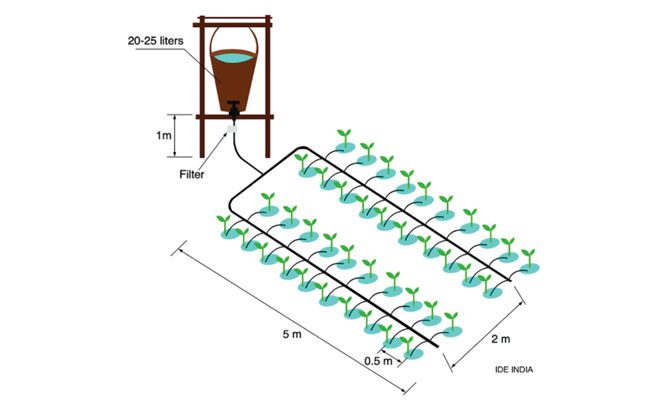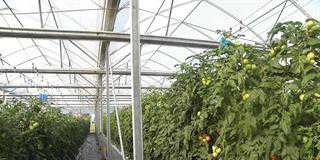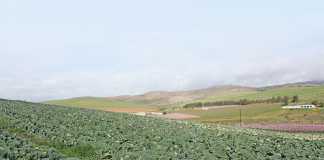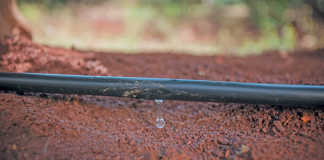
Photo: IDE India
Too much or too little water can have dramatic effects on the quality of vegetables and fruit. Oranges, for example, can become dehydrated, while still looking good externally. Such fruit may be dry and tasteless.
Vegetables can develop root problems if they remain waterlogged for long periods. The idea is to keep the ground moist at all times, but not waterlogged.
Beds should not have visible above-ground water for long periods. If you clench damp soil in your fist, you should be able to make a ‘mud cake’. The soil should not squelch through your fingers: it is too wet in this case.
Get to know and understand the type of soil in your beds. Water drains away far more quickly in sandy soils than in clay-type soils. Use a mixture of good (not clay) topsoil in beds at a rate of about 50%, and make up the balance with manure and compost.
Following on my previous column, you would have created raised beds using timber, and your soil mixture will be packed into these beds.
Almost all ‘grey water’ from showers, baths, basins and sinks can be used, although the water from washing machines and clothes washing is, in my opinion, too laden with detergents. This water, I have noticed, has a detrimental effect on plants.
Grey water can be put to good and profitable use irrigating gardens or orchards. First, find out where the outlet pipes are on the exterior of your home. Then decide where you can fit a septic tank into the ground near to your house (but not too close, as this water could seep and cause dampness in the walls). A 500ℓ tank is a good size, although I use a 1 500ℓ tank.
Water from basins and so forth can flow into this tank via basic plastic piping linked to the original plumbing outlets. This may take a bit of work and time, but, in the long term, it will provide you with a constant water supply to irrigate gardens and fruit trees.
Fit a small electric extraction pump (priced at about R750) to draw water from the sunken septic tank to another tank placed about 1,5m above the ground.
For drip irrigation, fit a 25mm LDPE (black plastic) Class 3 main line pipe to the tank’s outlet, where a stopcock or tap controls water flow.
The main line should run down the centre of your vegetable beds or fruit trees. Attach horizontal 15mm LDPE offshoot pipes to the mainline that reach all of the beds to the left and right of the pipe.
Fit T-piece joins secured with pipe clamps. The T-pieces must be ‘reducer joins’ that go from 25mm to 15mm. At the end of each offshoot pipe, install a plug that prevents water from flowing away. (The 25mm-to-15mm reduction in size allows for a pressure build-up that enables the drip system to work efficiently.)
Insert (or simply press) small drip-irrigation nozzles into the 15mm offshoot pipes where they can target each plant or tree.
The nozzles should not lie directly against the tree stem or vegetable plant, but about 5cm away from it.
Other options
If gravity isn’t enough to push water to all trees and beds, fit a small pressure pump at the holding tank. When switched on, this will push water through all of the drip lines. If you don’t wish to install septic tanks, simply catch grey water in buckets and pour it into a raised 200ℓ drum. Attach your irrigation system to this.
If you have reliable borehole water, the same system can be designed using a raised tank fed directly from your borehole.
If you are unsure of the pumps, pipes, nozzles, and pipe joins or connections you need to use, visit your local farmers’ co-op for further advice.
Finally, if your vegetable beds are raised from the ground, the offshoot pipes may require an ‘elbow’ pipe join that lifts the irrigation pipes up and into the raised beds.
Shane Brody is involved in an outreach programme aimed at transferring skills to communal farmers.













